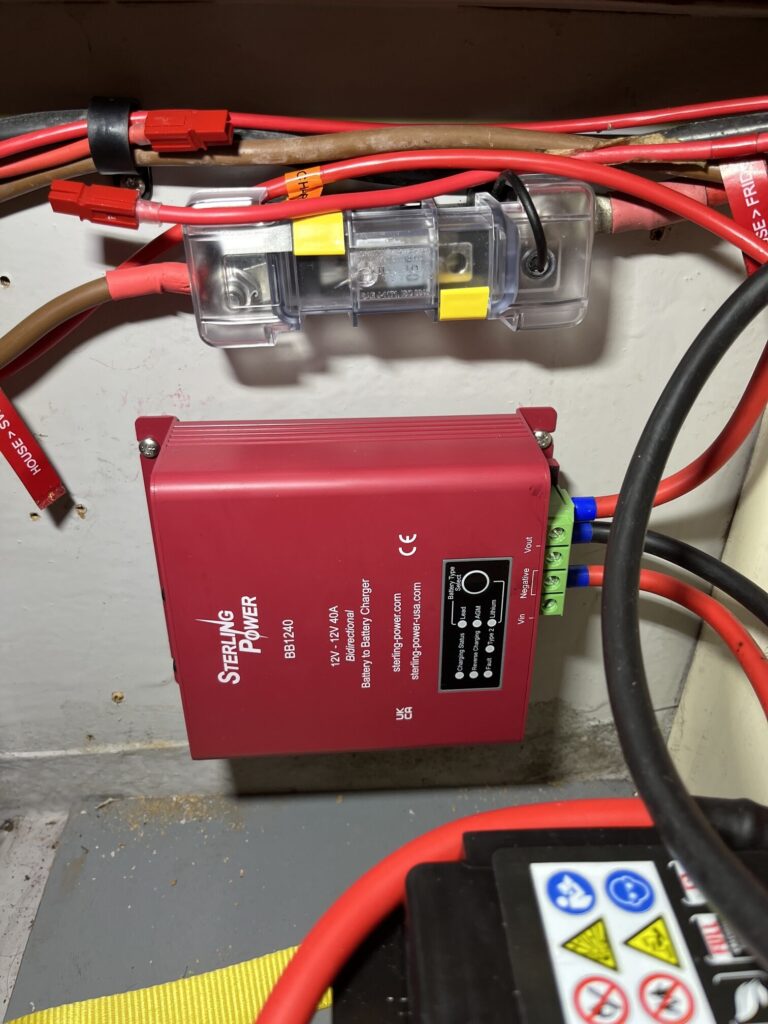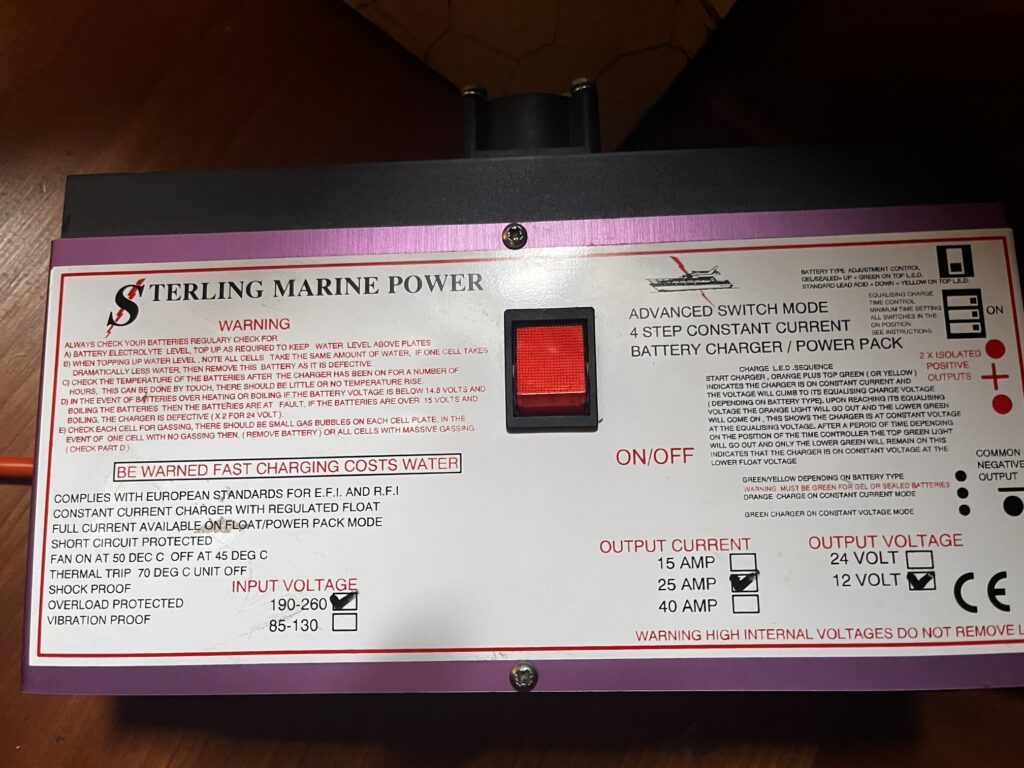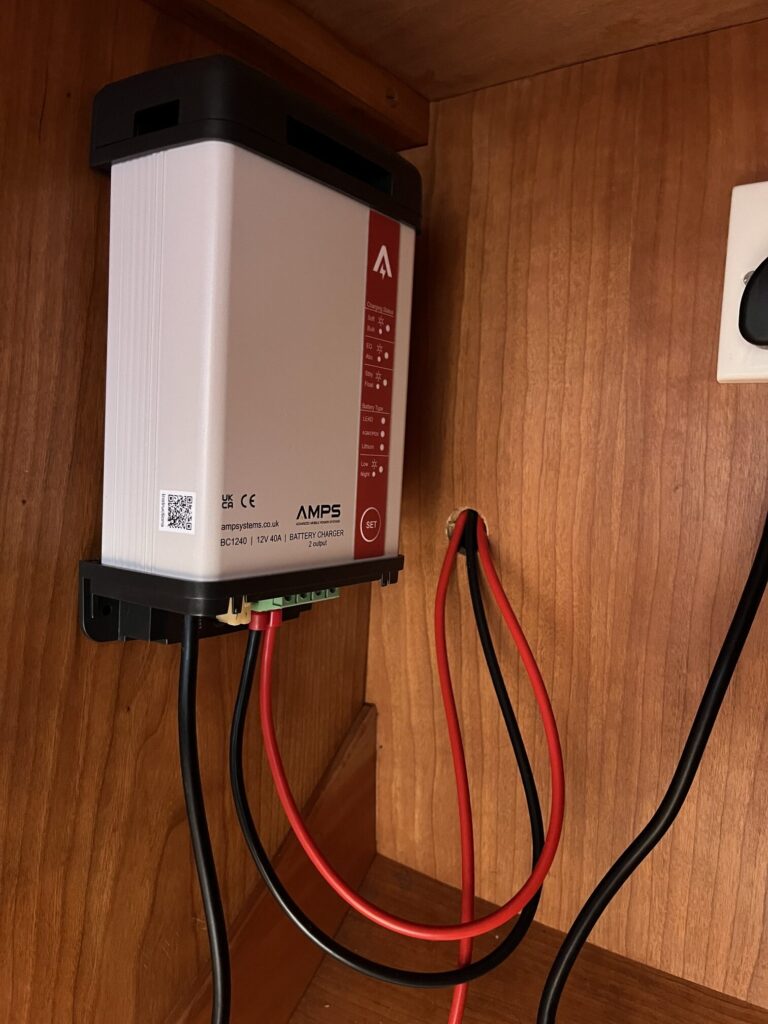In 2018, I installed a ProSplit-R to split the charge coming from the alternator across the house battery bank and the starter battery. In 2019, I moved the battery banks around so that the house batteries were under the port berth, and the starter moved into the well underneath the turn in the lounge seating. Then, in 2021, I added solar charging to keep the batteries topped up.
The solar charging hasn’t been working well; I think I oversized the Votronic MPPT device, and the panel output has dropped such that the panel can’t keep the solar regulator happy.
Anyway, at the start of the season, I had to replace the starter battery as it wasn’t keeping the charge at a level I was happy with. All of the batteries are about 5 years old at this point, so it’s very possible they’re at the point where they just don’t work well any more – I may not have treated them as well as I could have. The house batteries just about manage to keep 12.5 to 12.6 volts at the moment, but I’ve seen them as low as 12.3 after a few months of no charging.
October of last year, in the planning stages for putting in a lithium bank, I bought a Sterling BC1240 mains charger to replace the older unit (bare exposed terminals are unfun, the new one has clamping terminals), as well as a BB1240 battery-to-battery DC-DC charger. With a lithium bank, putting the lithium load directly on the alternator is a good way to burn the alternator up due to how much current the lithium bank can pull. The lithium BMS can also take the batteries out of circuit without warning, which would cause a backlash (electrically) in the alternator, potentially frying it.



With the DC-DC charger in place (replacing the ProSplit-R on the bulkhead), the alternator is set to charge just the starter battery. The DC-DC charger then pushes up to 40 amps across to the house batteries. When the house batteries (if?) are lithium, even if the BMS drops them out of the circuit, the lead-acid starter battery will just take the charge from the alternator, like it does right now. It only allows the charging current when the lead-acid is above 13.5V, and cuts out the charge when the input drops below 12.8V. Essentially, only when the alternator or BC1240 are providing charge will the BB1240 feed power from the starter battery to the house bank.
The BB1240 has a remote display (sold separately), which is quite useful, as the unit itself is not in the most accessible of locations. Unlike modern yachts (or refitted ones), Blue Opal doesn’t have anything resembling a full-sized electrics closet and doesn’t really have anywhere to put one.
Had to get myself a new crimper (bootlace ferrule, Perciva brand) to deal with the terminals on these devices, and it’s proved to be useful; ended up using it to also crimp the cables for the gas detector.